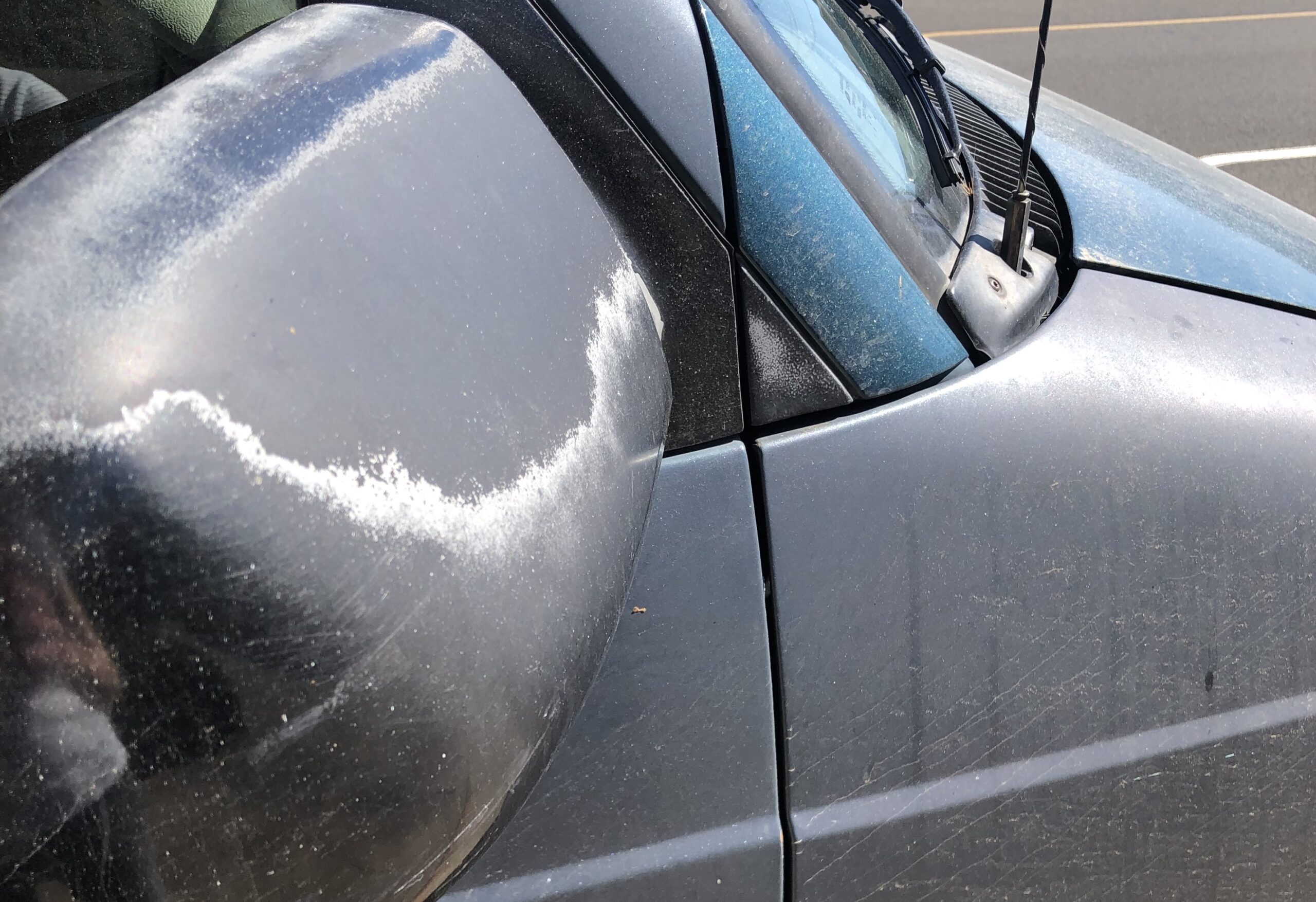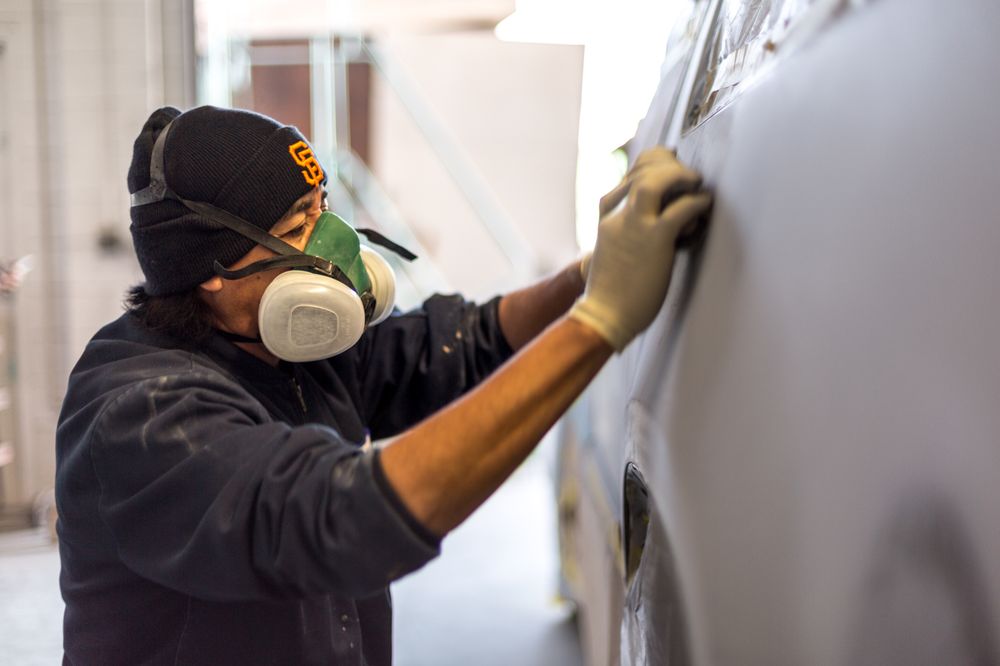
With many COVID-related lockdown measures still in place, the way we vacation has changed. Trips to amusement parks or festivals have been replaced by day trips to the beach or weekends in the Sierras. If you’ve spent the last few months taking advantage of California’s natural beauty, you’ve probably driven your car into harsher environmental conditions than normal. Even when left at home, cars in the Bay Area are exposed to extreme weather events like scorching heat waves, winter storms and ash from wildfire smoke. All of this can quickly take a toll on your car’s exterior. Learn how you can better protect your car from the elements and find a top rated auto body professional in your area to take care of any damage.
Sun, heat and your car
Sun and excessive heat can cause permanent damage to your car’s interior and exterior. On a hot summer day, a car’s surface temperature can climb past 100 degrees, with darker cars reaching over 150 degrees. Parked in direct sunlight, interior surfaces will be even hotter, with dark leather surfaces reaching close to 200 degrees. Over time, exposure to direct sunlight will lead to cracking and damage to the exterior paint and interior surfaces. Aside from being unsightly, this damage can lead to engine trouble if left unaddressed.
Auto body professionals have experience in repairing interior and exterior sun damage. Minor fading can often be repaired by thoroughly washing, buffing and waxing the vehicle. In cases of serious sun damage, a technician will need to refinish the corroded panels or the entire vehicle if required.
If your car has leather seats, the natural oils in the leather will evaporate when the car is left in the sun. These oils can’t be replaced by any product. For minor sun damage, a leather restoration kit can help improve the fabric’s color and condition. However, in cases of significant damage, it may be time to find a professional to replace or reupholster the seats.
Here’s how you can protect your car from sun damage:
- Park in the shade when possible.
- Use a windshield cover when parking in sunlight to reduce interior temperatures and sun exposure.
- Wash your car frequently. Accumulated dirt and bird droppings can cause permanent damage to your car’s paint job if left unwashed.
- Wax your car regularly so there’s always a protective layer between the sun and your car’s finish.
- Apply a conditioner to leather upholstery to help reduce cracking.
Ash and your car
Regional wildfires can cause layers of ash to settle on cars that are parked outdoors. Thankfully, ash doesn’t pose a threat to your car as long as it remains dry, but humid conditions like fog or dew can lead to problems. When combined with water, the calcium and potassium in ash take on corrosive properties that can lead to paint damage.
Auto body experts recommend clearing ash from your car as soon as possible. Because ash often contains dirt and debris, wiping it away with a cloth or towel could scratch the paint job. Instead, professionals recommend using a hose with strong pressure and then washing your car as you normally would.
Here’s how you can protect your car from ash:
- Park your car in a protected area like a garage or carport.
- Use wax to prevent ash from adhering to the car’s surface.
- Keep the windows and sunroof closed to stop ash from getting inside your car and filtration system.

An auto body professional can help restore cars that have been severely affected by the elements. Photo: A-Rod Auto Collision ©2020
Ocean air and your car
If you live close to the coast or regularly visit the beach, the salt air will affect your car’s exterior. That’s because salt, like ash, takes on corrosive properties when it combines with water. The moist sea air will lead to paint damage and rusting, and it can even break down the rubber in windshield wipers. In coastal environments, salt gets some help from the sun, which accelerates the rate of damage. Because the air itself contains salt, it’s important for drivers who are regularly near the beach to take precautions to slow down the damage to their vehicles’ exteriors.
Here’s how to protect your car while you’re at the beach:
- When parked, use a protective cover on your vehicle.
- Wash and wax your car at least once a month. Use soap when washing—simply rinsing your car won’t break down all the salt residue.
- Don’t forget to wash the undercarriage of your car, as salt water can quickly rust engine components.
- If you drive on sand or in saltwater, be sure to hose down your car as soon as possible to prevent any damage.
Rainstorms and your car
Northern California can experience significant rainstorms during the winter. Many drivers believe that a good, strong rain can clean their car’s exterior as effectively as a car wash, but this is hardly the case. Aside from the lack of soap, a rainstorm will apply greater force to a car’s windshield and hood compared to the side panels. Additionally, storms carry debris that can scratch, chip or damage a car’s exterior.
Rainstorms can be especially damaging to a car’s interior. If the doors or windshields have any leaks, or if you simply neglect to fully close a window, rainwater can saturate your car’s interior and warp the dashboard and front panel. Worse still, if rainwater isn’t dried quickly, mold can take hold in the upholstery or flooring.
Here’s how to prevent storm damage to your car:
- If possible, park your car indoors or under a carport.
- Use a car cover if you suspect your vehicle has a leak.
- Invest in rain guards for your car’s windows to redirect the rain flow.
- Wax your car regularly. Wax forces rain to bead rather than penetrate the paint layers.
Protecting your car from the elements will go a long way toward preserving its paint job and upholstery, but it’s not always possible to keep your car out of harm’s way. If your vehicle has experienced exterior or interior damage from sun, ash, saltwater or storms, an experienced auto body professional can evaluate the severity of the damage and make your car look new again.
